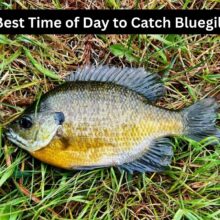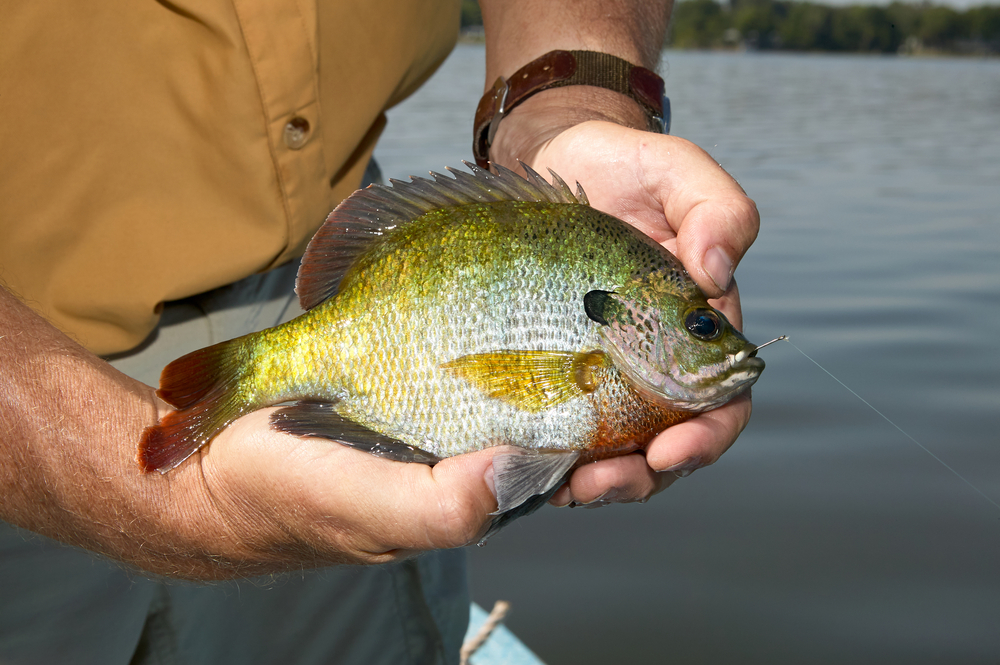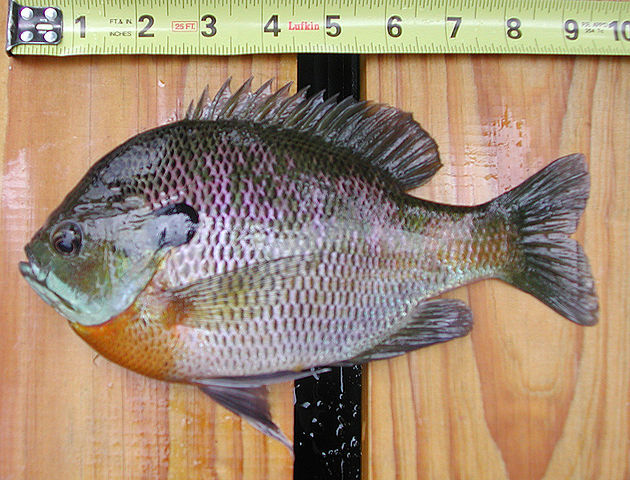This article may contain affiliate links. If you make a purchase after clicking on a link we may earn a small commission at no extra cost to you. As an Amazon Associate, I earn from qualifying purchases.
Best Time of Day to Catch Bluegill

Bluegill is a popular freshwater game fish that can be found in many bodies of water across North America. Anglers enjoy fishing for bluegill due to their abundance, willingness to bite, and delicious taste.
However, catching bluegill can be a challenging endeavor, especially if you don’t know when the best time to fish for them is. In this article, we’ll discuss the best time of day to catch bluegill and offer tips and techniques to help you reel in a big one.
Bluegill Habits and Behaviors
Bluegill are opportunistic feeders that primarily eat small aquatic insects, crustaceans, and small fish. They tend to feed more actively during the warmer months of the year, especially when water temperatures are between 65 and 80 degrees Fahrenheit.
Bluegill activity levels are also affected by other factors such as weather conditions, water clarity, and moon phase.
Also Read: Perch vs Bluegill
Throughout the day, bluegill behavior patterns can vary significantly. In the morning, they are usually most active, as they have rested for the night and are hungry. In the afternoon, however, bluegill activity levels tend to decrease, as they seek shelter from the hot sun and become more sluggish.
In the evening, bluegill activity levels increase again, as they begin to feed in preparation for the night. Understanding these behavioral patterns is key to determining the best time to catch bluegill.

Best Times to Catch Bluegill
There are three main periods during the day when bluegill are most likely to be active and feeding: morning, afternoon, and evening.
- Morning: The morning is generally the best time of day to catch bluegill, as they are hungry and more active after a night of rest. During this time, bluegill can usually be found in shallower water, near the edges of the lake or pond.
- Afternoon: As the day heats up, bluegill activity levels tend to decrease. During this time, they may move to deeper water or seek shelter under overhanging trees or vegetation. Anglers may need to adjust their tactics, such as using smaller bait and presenting it in a more subtle manner, to entice bluegill to bite.
- Evening: In the evening, bluegill activity levels increase again as they prepare for the night. They can often be found in shallower water, near structure such as weed beds or submerged logs. This can be an excellent time to catch bluegill, especially during the summer months.
It’s worth noting that the best time to catch bluegill can vary depending on the location and time of year. Factors such as weather conditions, water temperature, and moon phase can all impact bluegill behavior, so it’s important to pay attention to these factors when planning your fishing trip.
Also Read: Can You Eat Bluegill?
Overall, the key to catching bluegill is to be patient and persistent. With the right timing and techniques, you can increase your chances of landing a big one.
Factors Affecting Bluegill Activity
To have the best chance of catching bluegill, it’s important to understand the factors that affect their activity levels. Here are some of the key factors to consider:
- Water temperature: Bluegill are most active when water temperatures are between 65 and 80 degrees Fahrenheit. As temperatures outside this range, their metabolism and feeding behavior are impacted, and they may become less active.
- Weather conditions: Bluegill can be affected by weather conditions such as cloud cover, wind, and precipitation. On cloudy days or when it’s raining, bluegill may be more active and feeding closer to the surface. On windy days, they may move to more sheltered areas.
- Water clarity: In clear water, bluegill can be more easily spooked and may be more cautious when approaching bait. In murky water, they may be less cautious, but it can also be more challenging to get their attention.
- Moon phase: Bluegill feeding behavior can be impacted by the moon phase. During a full or new moon, they may be more active at night and less active during the day. During a quarter moon, they may be more active during the day.
By understanding these factors and how they impact bluegill behavior, anglers can adjust their tactics and increase their chances of success on the water.

Tips for Catching Bluegill
Here are some tips and techniques for catching bluegill:
- Use the right equipment: When fishing for bluegill, use a lightweight rod and reel with a small hook and light line. This will allow you to feel bites more easily and present your bait or lure more naturally.
- Use the right bait or lure: Bluegill will bite on a variety of baits, including worms, crickets, and small jigs or spinners. Live bait tends to be the most effective, but artificial baits can also work well.
- Present your bait or lure correctly: When presenting your bait or lure, try to make it look as natural as possible. Use a bobber or float to keep your bait at the right depth and move it gently to simulate natural movement.
- Pay attention to your surroundings: Look for areas where bluegill are likely to be, such as around weed beds, submerged logs, or other structures. Pay attention to the water temperature, weather conditions, and moon phase, and adjust your tactics accordingly.
- Be patient and persistent: Bluegill can be finicky biters, so it’s important to be patient and keep trying even if you don’t get bites right away. Keep changing your bait or lure, adjusting your presentation, and moving to different areas until you find success.
- Practice catch and release: Bluegill populations can be sensitive, so it’s important to practice catch and release when possible. If you do keep fish for eating, make sure to follow local fishing regulations and only keep what you need.
By following these tips and techniques, you can increase your chances of catching bluegill and have a more enjoyable fishing experience.
Conclusion
In conclusion, bluegill can be a challenging but rewarding fish to catch. To increase your chances of success, it’s important to understand their behavior patterns and the factors that affect their activity levels, such as water temperature, weather conditions, and moon phase.
By targeting the best times of day to catch bluegill, using the right equipment and bait or lure, and paying attention to your surroundings, you can improve your chances of landing a big one.
Remember to practice catch and release when possible and follow local fishing regulations to ensure the sustainability of bluegill populations for future generations of anglers to enjoy.
